The expansive and scarcely inhabited upstate New York is the choice of many New York artists who wish to live closer to nature, yet stay in relative proximity to the city. Two years ago the painter Pia Dehne and her husband left their Bushwick, Brooklyn loft behind and moved to the the wilderness of the Catskill Mountains. Originally from Düsseldorf, Germany, where she attended the Academy of Arts as a Masters student under Markus Lüpertz, Pia moved to Berlin in the early nineties and then to New York in 1999.
In the first years in New York, she was actively involved with the city’s dynamic international art scene; an exhilarating but also very distracting engagement. Pia and her husband Mark Ohe are nature lovers at heart. Gradually, they started to spend more and more time upstate which finally resulted in the decision to make Catskills their primary residence. Pia is and has always been a painter; it is her primary calling that defines everything she does. Unlike many artists, she has never had another profession on the side or shifted her focus elsewhere. Her gracious, sun-flooded house on a green hill is the perfect place to allow her imagination to flow and concentrate on her practice. The finished products are intrinsically skillful paintings that investigate the spiritual and philosophical explorations of appearance and non-appearance.
This story is featured in our second book, Freunde von Freunden: Friends, order within Germany here, or find the book internationally at selected retailers.
This portrait is part of our ongoing collaboration with ZEIT Online who present a special curation of our pictures on their site.
























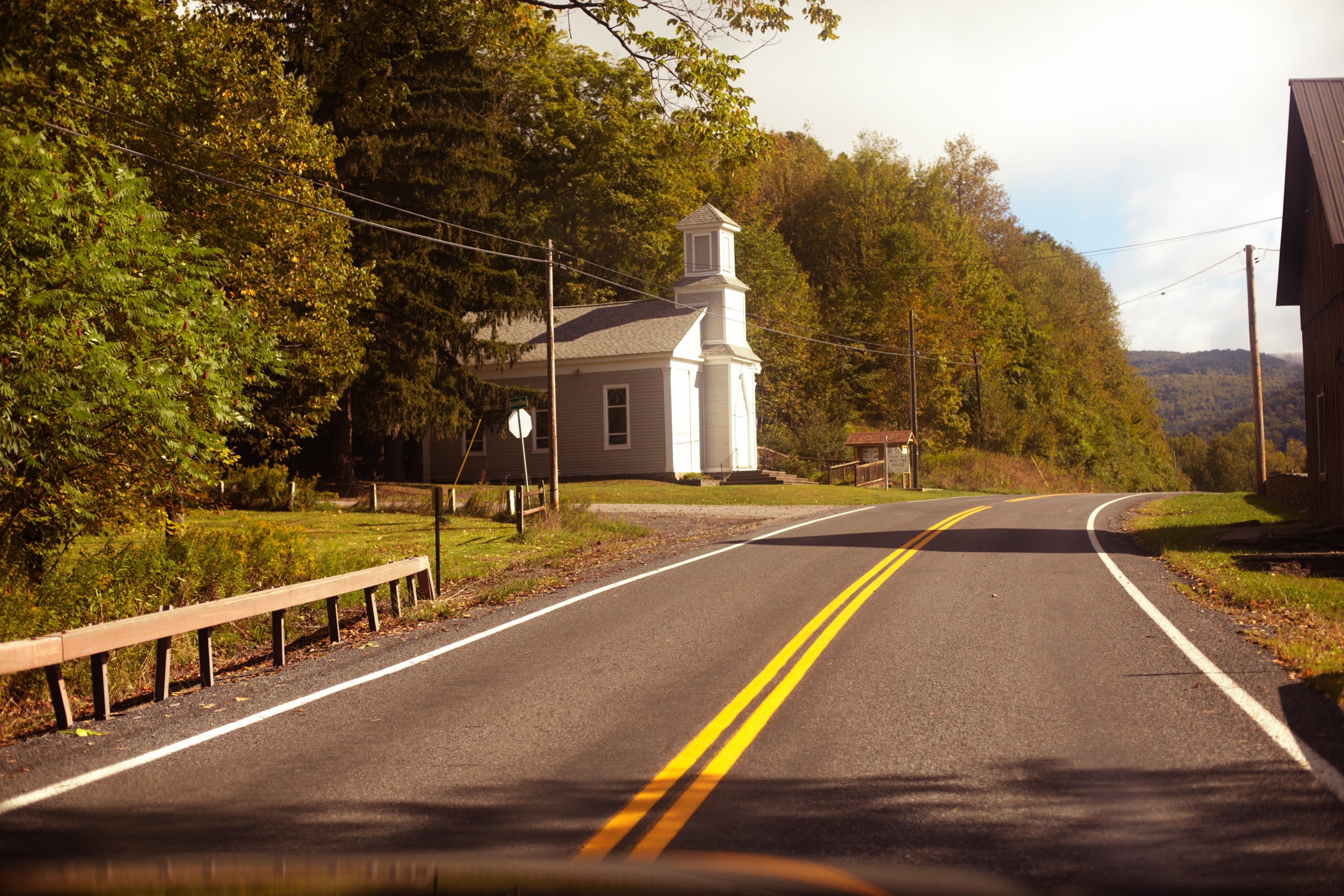
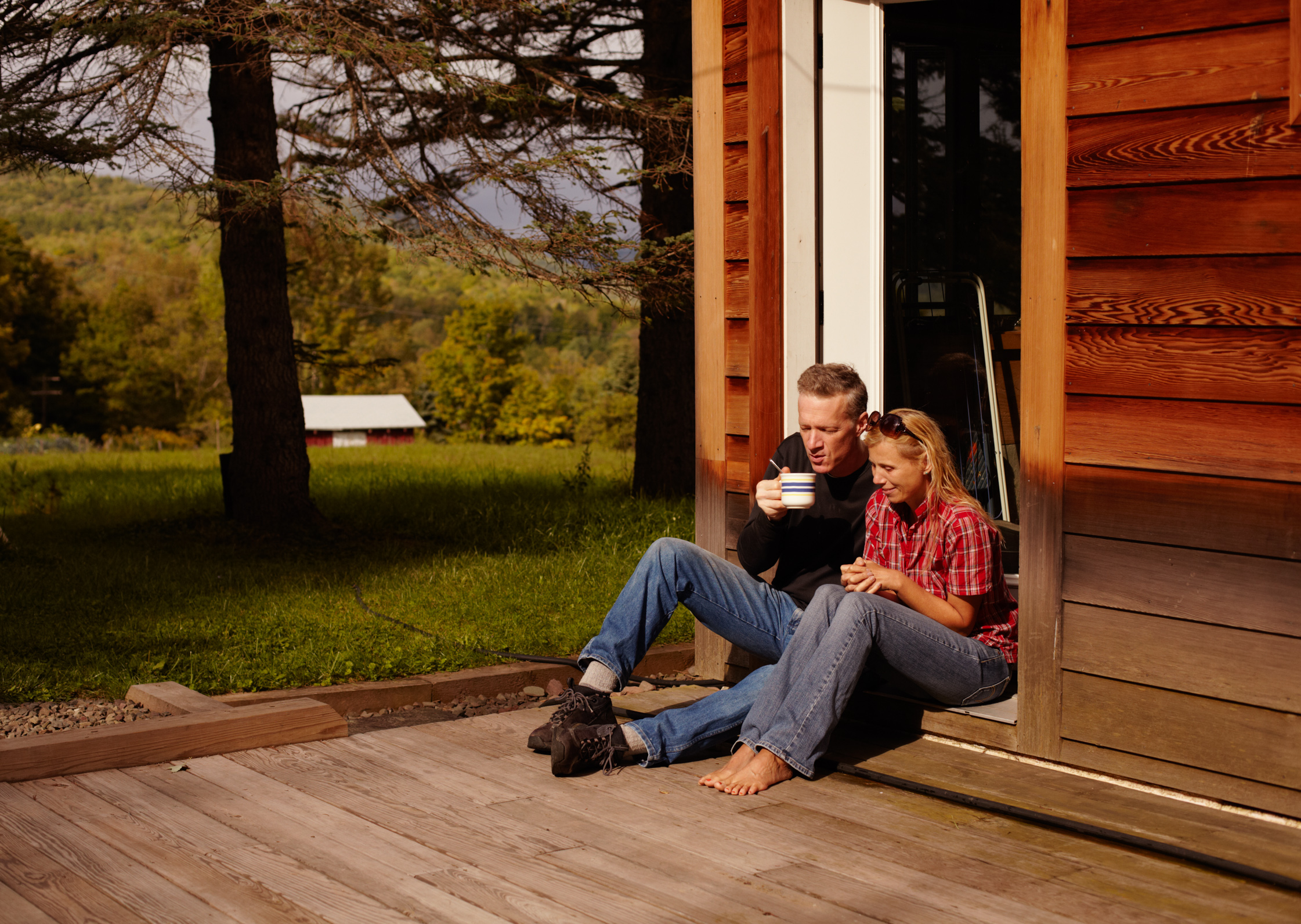
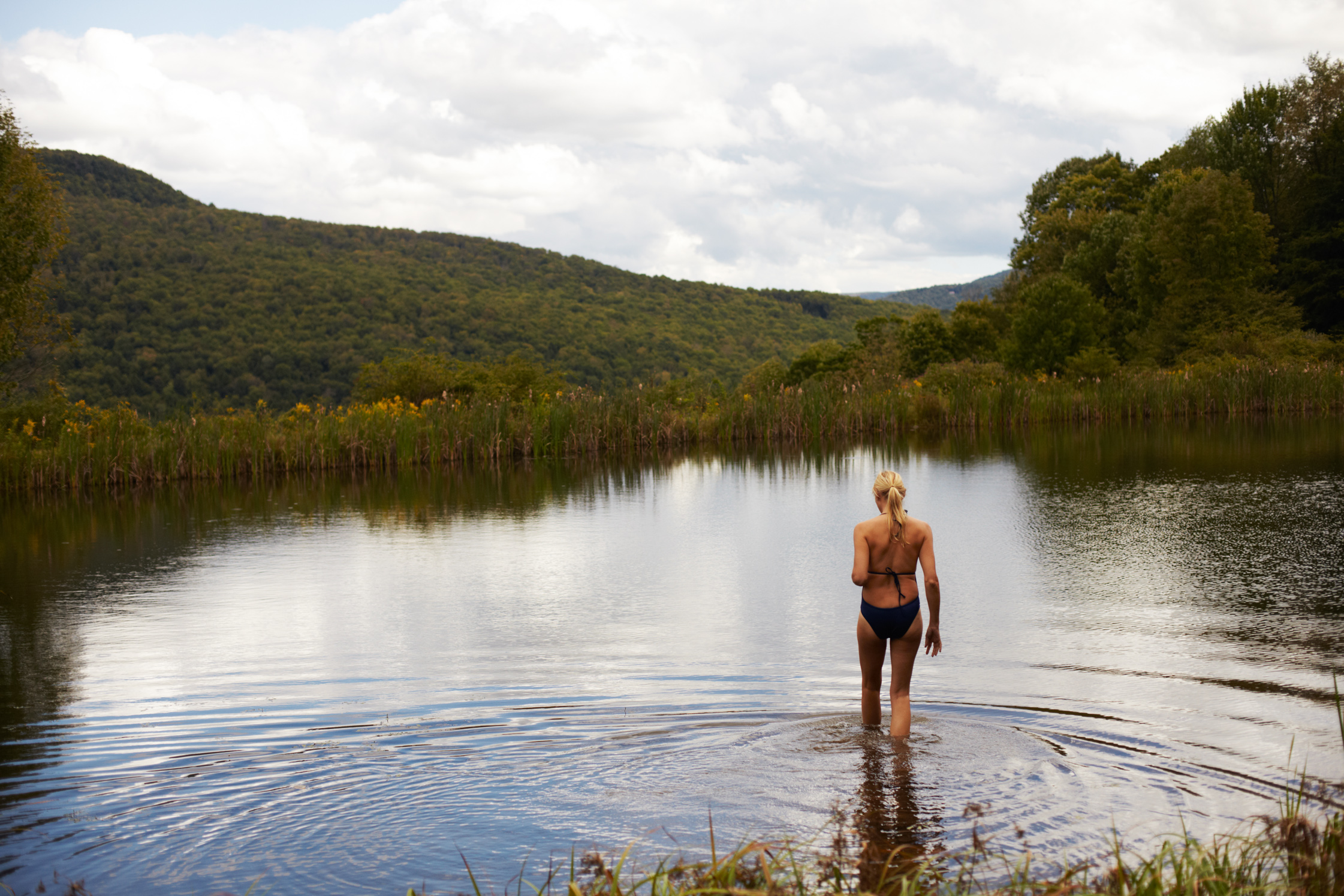



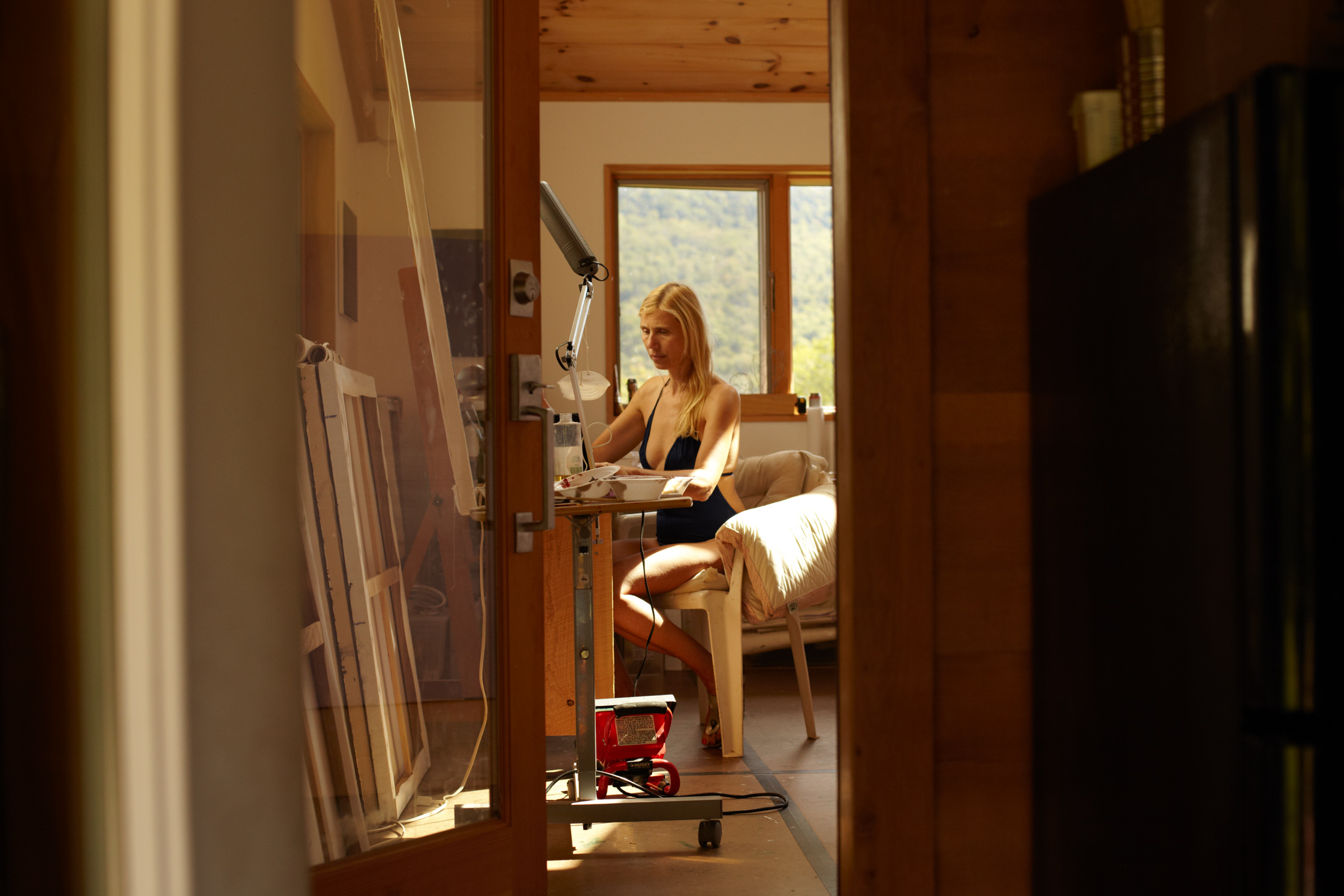

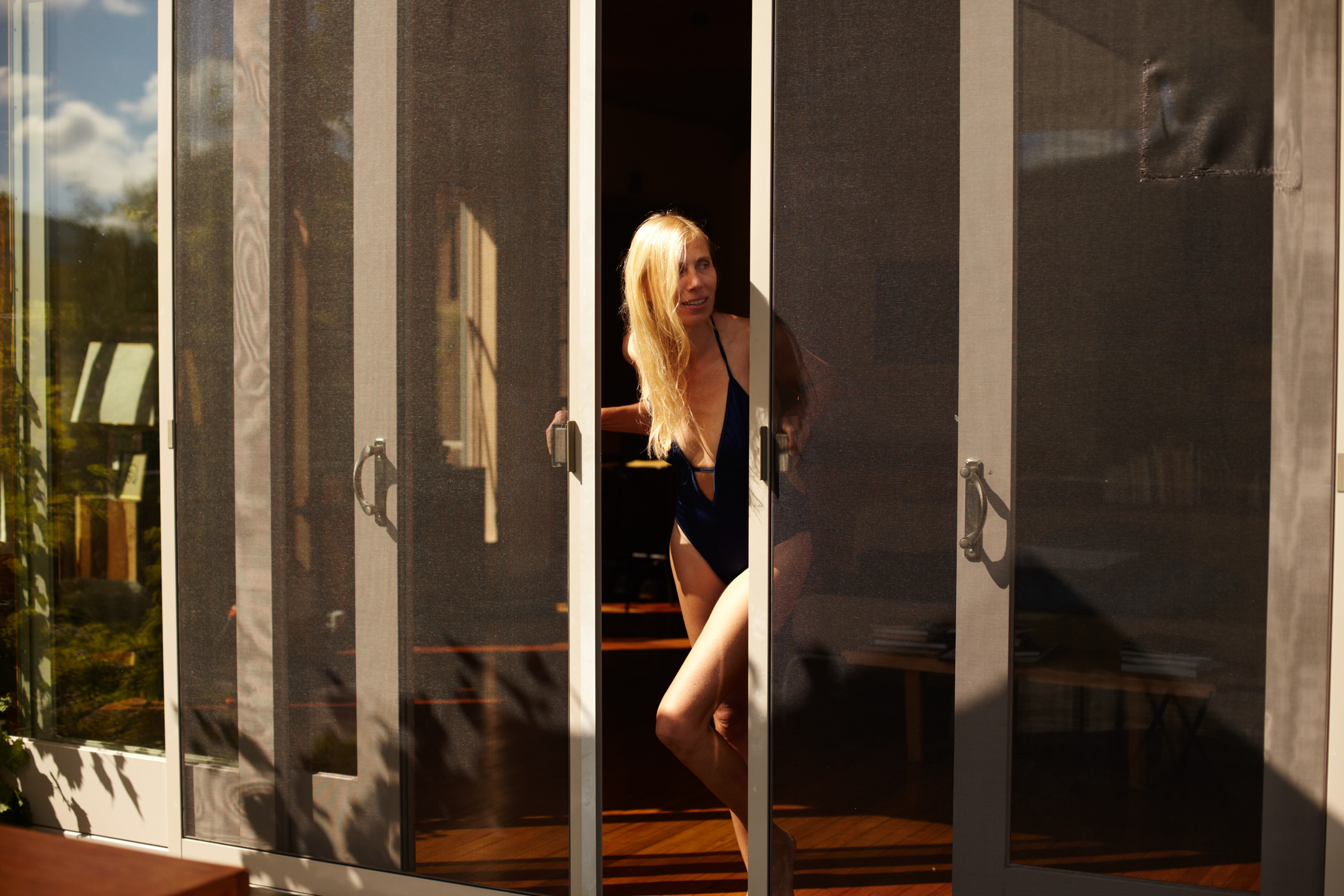


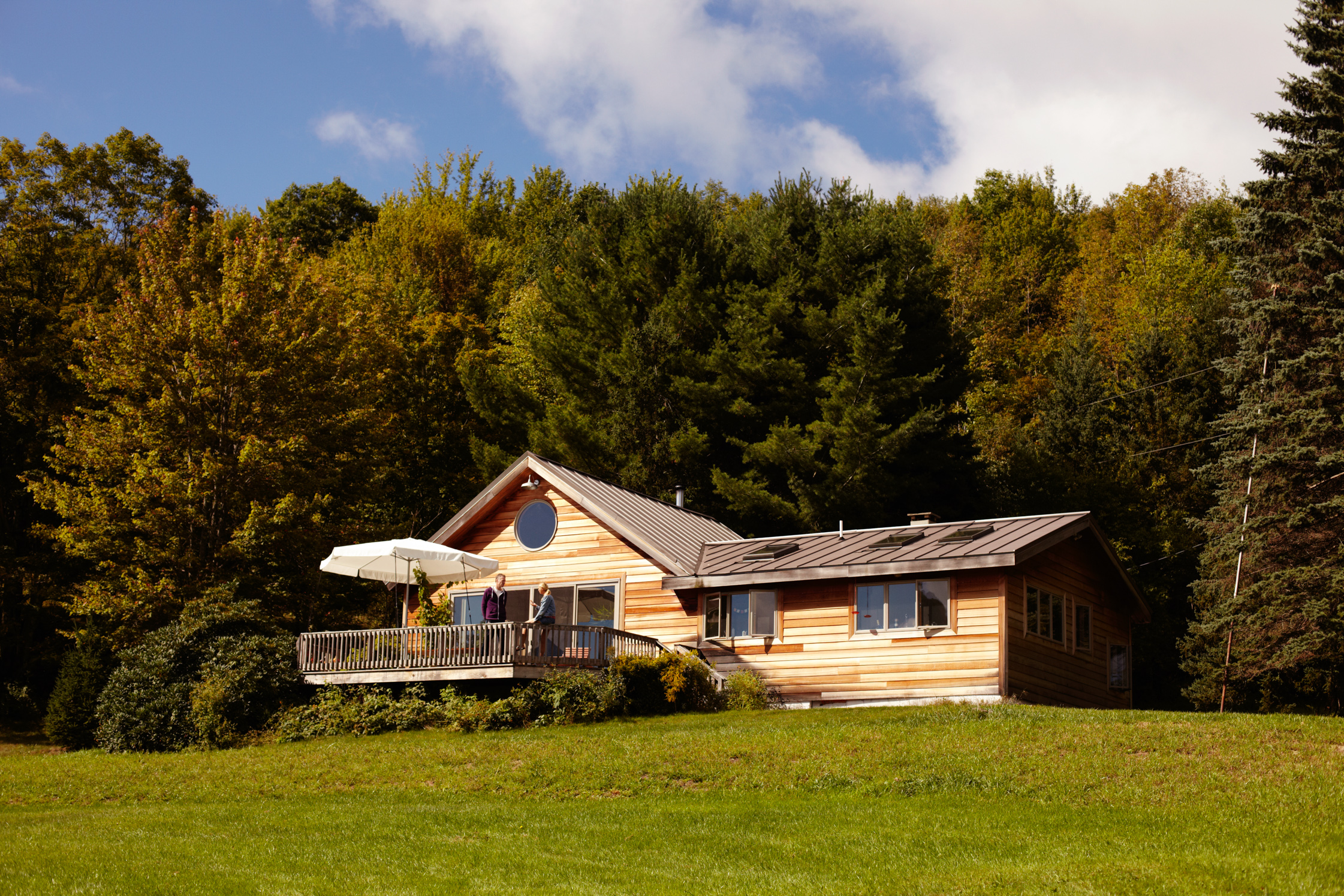

Pia, your house and garden are amazing. How did you end up here in the Catskill Mountains?
We moved upstate two years ago; it was not a thing we planned to do. We had bought a piece of land close by years ago and our idea was to build a house there. But that turned out to be really complicated. We then found this beautiful house and piece of land for rent. It was kind of an accident – even though I don’t believe in accidents. I saw the property online and proposed we go and have a look at it. It turned out to be a really beautiful spot. It is really a house we would dream of building ourselves. At the same time Mark Ohe, my husband had reached a point where he basically could work from anywhere with his graphic design work, so we were free to go.
What is the favorite element or space in your home?
The window view outside my studio.
Do you have a favorite possession?
A painting and several drawings from the late 1930s by the Düsseldorf artist Robert Pudlich.
Tell us a bit about yourself, about your past…
I grew up in Düsseldorf. My formative years were really exciting because it was the time of New Wave and Punk Rock, with bands like Fehlfarben, DAF, Pyrolator, Der Plan, Kraftwerk, and I was part of that music scene.
What effect did it have on you to be part of this movement?
It certainly had effects, I am not sure whether good or bad! Somehow in the 80’s it was important to be cool, self-destructive and standoffish and not show your feelings. I think that was kind of poisoning. And then there was also a lot of drug abuse. I was stuck with this whole behavior and it took me years to understand how stupid that was. There is this book “Verschwende Deine Jugend” – “Waste Your Youth”, by Jürgen Teipel – that’s exactly what we did.
Was this feeling of being stuck one of the triggers that propelled you to move to Berlin, and then to New York?
Yes, when I moved to Berlin I wanted to re-invent myself and that was also part of my motivation in deciding to move to New York. There is really no explanation. I just wanted to expand further, and to do something I always had dreamed of doing. At that time, I knew I had to do it then, or I would never do it. As an artist it was a big step for me because I didn’t know anybody in New York. I had no connections and no representative gallery. So I basically just threw myself in there. As an anonymous entity, I was able to be who I wanted to be. And I feel people were genuinely interested in me and made me feel very welcome.
Talk a little bit more about your background, your family and how you grew up.
My parents divorced when I was three years old, so I grew up with my Mom, sister, my grandmother, and a nanny in the historic district of Düsseldorf – the Altstadt. We lived above “Fatty’s Atelier”, which was a very successful artist bar and restaurant run by my grandfather. My grandfather also was a caricaturist. He was a big and funny guy, a real personality. People and artists from all over the world came to the bar because of him.
It sounds like you had a lot of art and bohemian influences from a young age…
Yes, art was everywhere. We lived very close to the Art Museum and the Art Academy also. I remember seeing an art performance of Josef Beuys with a hippie crowd watching as a small child. Also, both of my parents had a quite bohemian lifestyle and this part of Düsseldorf where I grew up was pulsating with music, theater and arts. My sister Miriam is a filmmaker. Both Miriam and I were always drawn to doing creative stuff, and my Mother was very supportive of that.
My Dad was a psychiatrist. He died pretty early, at the age of 52. He was writing poetry and a member of the “Wiener Gruppe” founded by Konrad Bayer. When he lived in Berlin he supported an organization that helped people escape from East Germany after the wall was erected. He helped to dig tunnels and was involved in quite a few dangerous operations. I had a pretty good relationship with my Dad later on as a teenager. There was a lot of interaction between us. He gave me interesting books to read, for example, he was a huge fan of William Burroughs. So that influenced my life back then, and still does today. My Dad was a talented and multi-dimensional person and he helped many people as a psychiatrist.
How did you support yourself before you were able to live from your art?
I’ve been drawing as long as I can remember and I always wanted to be a painter. To support myself I used to work as a model. When I was twenty-two I went to live in Los Angeles for a little bit to paint there. The only reason I went back to Düsseldorf was because I was accepted at the Art Academy. That was a pretty big deal and I wanted to be serious about my career as an artist. After I graduated I went to Berlin, to be closer to my sister and to define my own language in painting and art. My first solo exhibition was in Berlin at Achim Kubinski, and after that things started to happen for me and my career.
You moved to New York in 1999?
Yes, I arrived on my my birthday, on Halloween. And it was the best thing I could have ever done for myself.
How did this affect your work?
Sometimes when you do something extreme like moving to another country you discover new things about yourself. I became aware that I had a talent for bringing different people together to create something; to make something happen like a performance. In general I started being more outgoing. I had all this energy and I had to explore that field further. That’s how two of my projects came together: For, “Naked City” (2004), I re-enacted Jimi Hendrix’s record cover of “Electric Ladyland” and cast a group of women I knew through friends and from within the art world. For my work, “I want to ride my bicycle” (2006), I did a similar thing, however, for this project it was even bigger and more involved. I created nude costumes for 40 women and had them pose for the re-enactment of the Queen “Jazz” album poster. Finding the women for the performances and my relationship with them were all part of the art piece. My work continues to evolve and at the moment I am in more of a solo-phase.
Visual appearance, illusion, camouflage and mimicry are recurring themes in your work. Can you talk a bit about that?
The camouflage idea surfaced when I did the bicycle performance in New York. The nude suits I created for the girls had this trompe l’oeil effect. In essence I created an illusion, or paradox by making their bodies look more naked than naked. All of my work has this underlying theme of something hidden, or forbidden. I find it really pleasurable to work around the notion of tricking the eye. It’s all about appearance and non-appearance, about what we see and what do we not see. About thinking something is there when it’s not there, or vice versa. This idea of camouflage also goes together with my Buddhist studies, which basically seek to get to the bottom of what reality and phenomena is. There is a conclusion that our perception of reality is often artificial, that we’re pretty much living in an illusion.
Your very latest work is around recreating images, “photos” of UFOs.
The UFOs also fit with that idea about what is real and what is illusion. We all have an idea of how an UFO appears. It must have somehow entered our collective mind stream at some point. Equally there are no unicorns either, or dragons and devils, but we all know what form they take. I would like to entertain the possibility that there are things out there, that we are not able to perceive with our regular human sense organs; not even with scientific methods. We have evolved a certain way due to our human form, with two eyes, ears, nose and a human mind. A fish has a very different point of view, as does a dog or cat.
It is an interesting area to explore…
Exactly! I am exploring images that are part of our collective consciousness without having proven to be real yet. I am interested in how such images exist in our society. How they have such a strong imprint in our minds that they have become part of our reality. I see the world as translucent, transparent shimmering light, constantly changing like clouds, echoes, and rainbows. Isn’t the world as we perceive it only made of our minds?
What’s a typical day like when you’re home?
I wake up at six o’clock, drink my coffee, then I will meditate for an hour, do some stretching and then start on the canvas. I absolutely need the daylight for painting so sometimes I push meditation to the evening hours, because I need as much daylight as possible. I also try to have writing emails and research fall under the dark hours. I work for a few hours and then I make lunch. Afterwards I go back to the canvas.
Are you eating a lot from what you grow in your garden?
Yes, all Summer from June to September. We are very fortunate to be almost exclusively feeding ourselves from the garden. We are growing a lot of vegetables such as eggplants, carrots, parsnips, tomatoes, spinach, butternut squash, broccoli, brussels sprouts, kale, herbs, you name it.
What else do you do on a day at home?
I do a lot of image research on the web. Once in awhile I take a study break. I am studying Buddhist philosophy, it is like going to school and also very inspiring in my work. It acts as another tool I use with my work. While I am reading I come up with a new idea and then I start looking for images. My mind never really stops working on art, whatever I am doing, whoever I meet it’s always part of the process.
What does your living and working environment mean to you?
Moving upstate was also a financial decision because it can be such a drag to find a nice workspace in New York city. I wanted to find a place where I could really feel like I could develop my work without being cramped in some dark studio without windows. I was a bit worried that I was going to lose touch with all my people if I move out here, but it turned out to be really great. Being constantly confronted with the absolute beauty of nature is so nurturing for me. It has been so good for my eyes and my soul. I look outside the window at this beautiful landscape with the mountain range. I am breathing and it is enjoyable.
Do you feel like you live more in the moment outside of the city?
Yes, but the goal for me is to be continuously in the moment no matter where I am. In this way, I think one can be in the moment in New York City as well. New York is very pushy and being part of that energy is very inspiring. That’s what it was for me for many years and remains this way when I return. The energy is palpable and gives me a lot of creativity, mainly because of the people. There is so much feedback and input available for your art. Here you only have yourself. In New York I feel like a part of it, there is a constant dialogue.
Do you think that step was important for your work, to move to the countryside?
I think it was important but I am also far away from cutting my ties to the city. I am actually planning on renting a studio in New York again, so I am currently looking for one. Things are not completely black and white, and I need both environments. Right now I am just enjoying my space and being able to focus single-mindedly on painting without the distractions.
Do you and Mark have a favorite weekend getaway or place to travel to?
Not really, it’s already a permanent vacation up here.
What do you think are the main differences between German and American culture?
What the Americans do best is show business, in Germany things are still a little more stiff.
Do you miss living in Europe, or conversely what do you love about living in America?
It has never been easy for me, when I’m in Europe I miss America and the other way around. New York is also not quite America, it has its own rules and niches. But generally speaking I would say that America is more light-hearted and that lifts my spirit.
Pia many thanks for allowing us to explore your nature retreat in the hills and sharing with us your personal journey from Europe to America and the development of your career as a painter. To see more of Pia’s work see here.
This portrait is part of our ongoing collaboration with ZEIT Online who present a special curation of our pictures on their site. Have a look here.
Interview & Text: Isabel Kirsch
Photography: Debora Mittelstaedt
